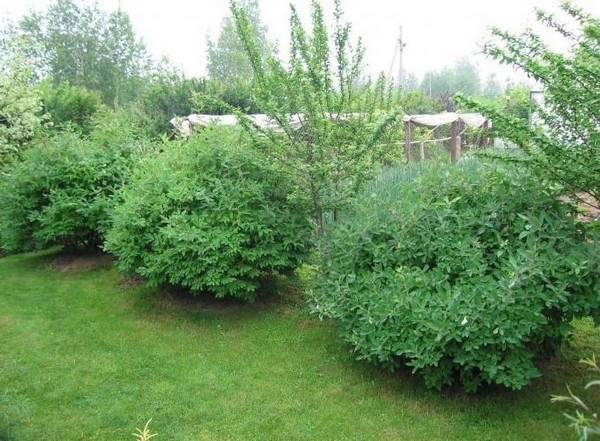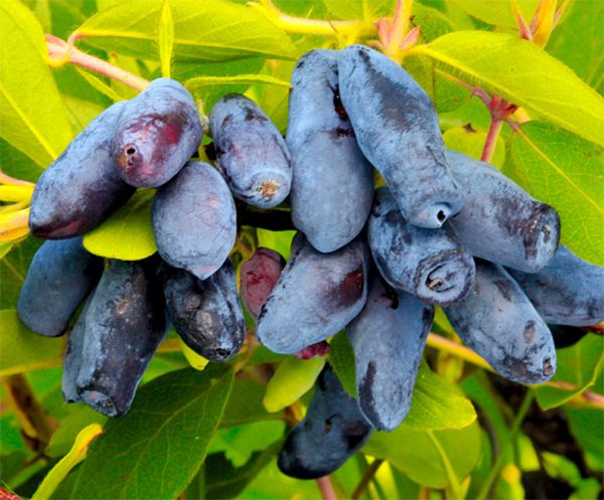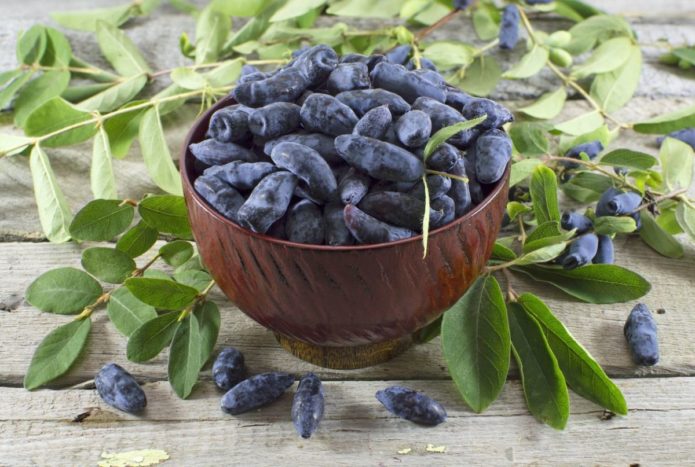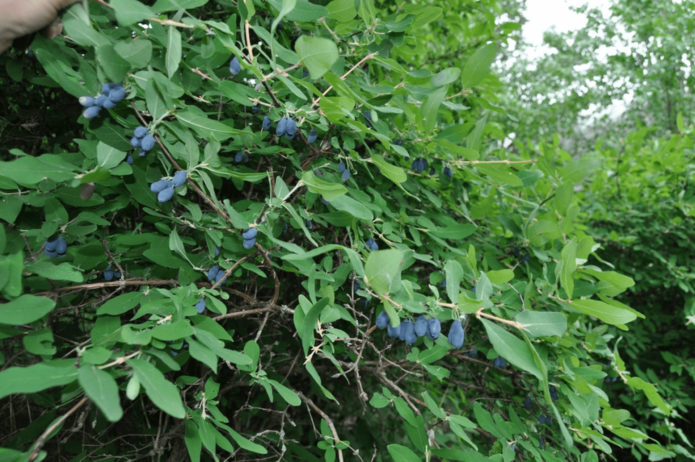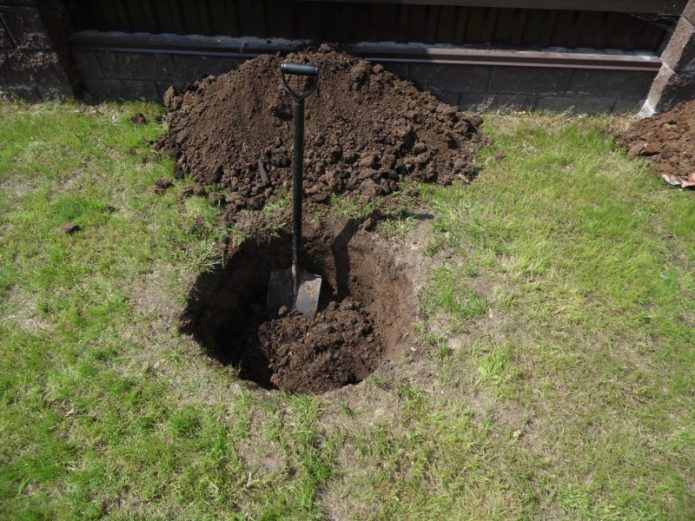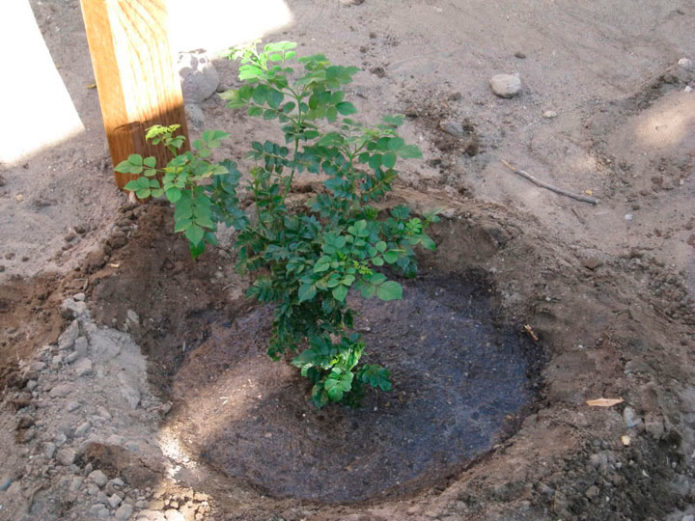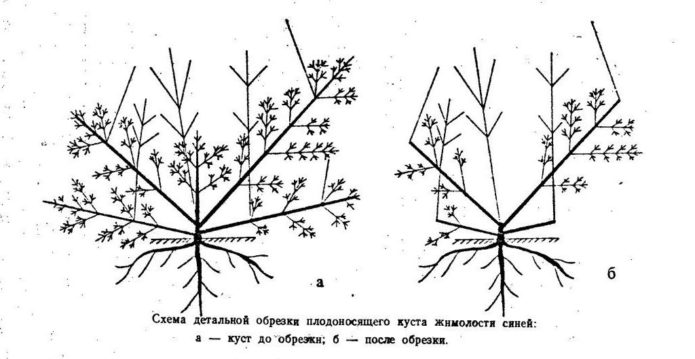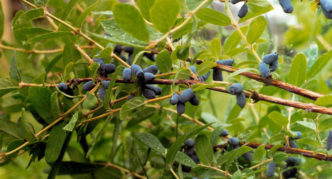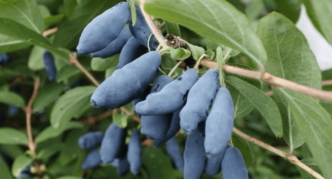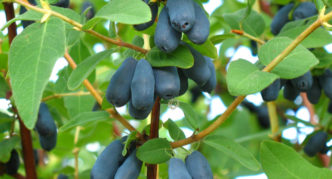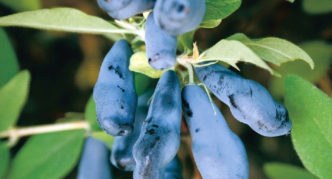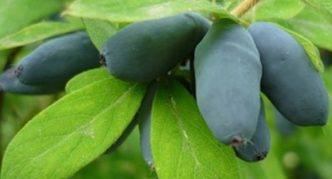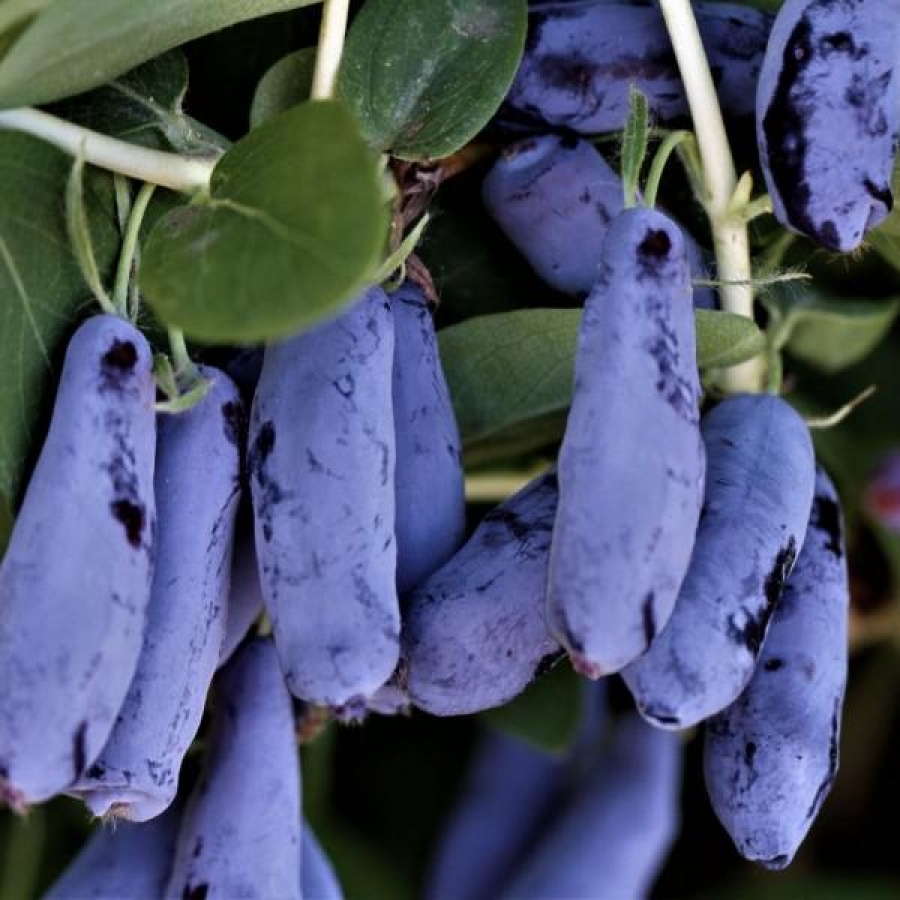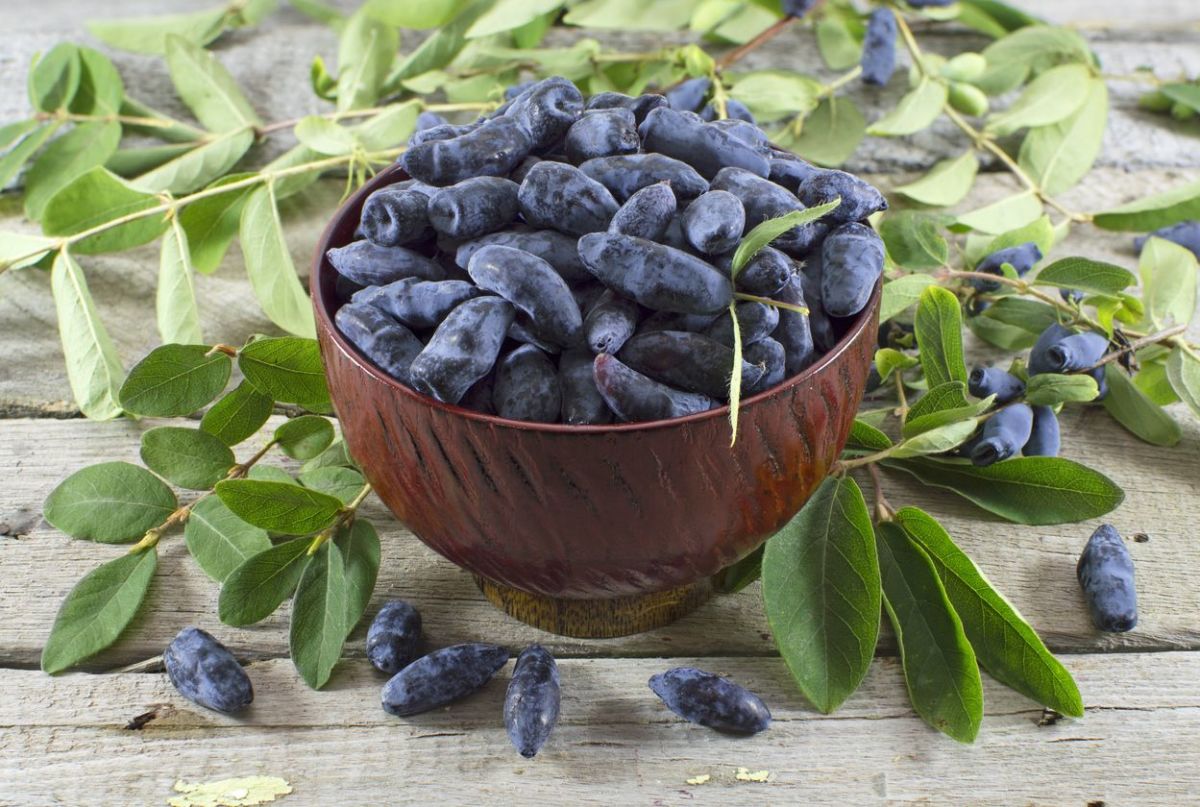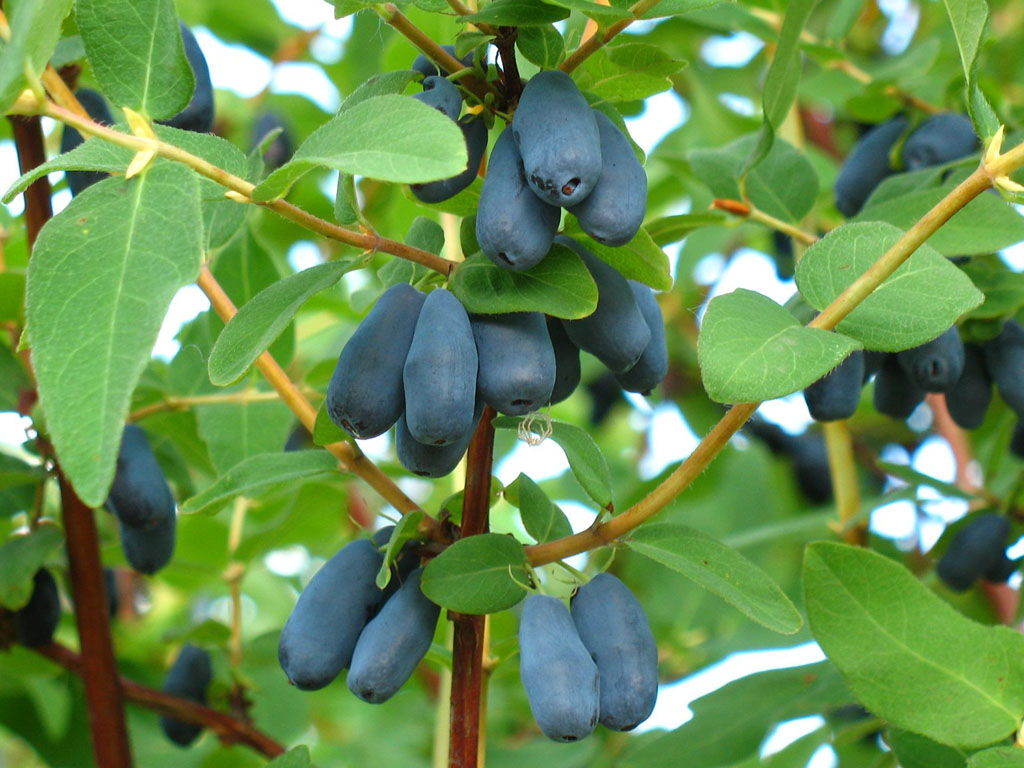Honeysuckle is not yet a very popular crop among our gardeners, but in vain. Much has been written about its benefits, thanks to the unpretentiousness of the plant, it is not difficult to grow this shrub in your garden. One of the most popular varieties of edible honeysuckle is the Leningrad giant.
Content
From the history of the Leningrad giant
The fruits of honeysuckle have been consumed by the inhabitants of the Far Eastern and Siberian lands and have been used as a medicine since ancient times. Studying Kamchatka and Primorye, researchers described this shrub back in the 17th-18th centuries. Later Michurin was engaged in breeding new varieties of this shrub for growing in gardens.
Now the domestic school of selection of these berries is the leader in the whole world. The Pavlovsk Experimental Station named after N. Vavilov, which is located near St. Petersburg, has developed excellent varieties of garden honeysuckle. Among them is the Leningrad giant - one of the best varieties in many respects.... It was grown by the breeder M. Plekhanova in collaboration with colleagues. The seeds of wild honeysuckle growing in Kamchatka were taken as the initial seed.
Meet the Leningrad giant
The result of the work of St. Petersburg breeders was the edible honeysuckle Leningrad giant, the ripening of the fruits of which has an average time. Ripe berries can be harvested from mid June to late July, depending on where they are grown and the weather.
Beautiful sprawling and erect bushes in the form of lush balls grow 1–2.5 m in height, depending on the zone of cultivation and care... They will not only delight the gardener with wonderful fruits, but will also decorate the site, help to separate one zone from another.
The fruits of the Leningrad giant are elongated and slightly bumpy. Berries can be up to 4 g in weight and up to 3.5 cm in length. One of the advantages of this variety is that the fruits are collected in the likeness of bunches. Their compact arrangement makes harvesting easy. The skin of this honeysuckle is dense, dark blue in color, covered with a medium density of bluish bloom.
The dessert taste of the Leningrad giant is completely devoid of the bitterness inherent in many other varieties of honeysuckle. The fruit pulp is sweet and aromatic, slightly fibrous. They are not only eaten fresh, but also used for various preparations for the winter - jam, jam and the like, as well as for medicinal purposes. The berry is fruitful, each bush can give from 3 to 5 kg of fruits, but they will appear in the third or even the fourth year after planting the bush.
Those who are already raising the Leningrad giant in their garden report the highest frost resistance of this variety - up to -40 ° C. Even the flowers of this honeysuckle tolerate temperatures as low as -8 ° C.In addition, the bushes are not afraid of various diseases and pests, and ripe berries almost do not crumble and can remain on the bush for up to a week. The crop is not afraid of transportation, while maintaining all its qualities.
Video: edible honeysuckle Leningrad giant
We take care of the Leningrad giant on our site
This variety of honeysuckle loves a sunny place, space for the growth of the bush, corresponding to the size of the plant, so it is better to plant it at a distance of at least 1.5-2 m from one another. When planting the Leningrad giant, rows are left with aisles up to 3 m wide.
Before planting the Leningrad giant honeysuckle on your site, check the acidity level of the soil in the place where the bush will grow. The best acidity index for this plant is pH 6–7.
Procedure:
- For each bush, they dig a planting hole with dimensions of 0.4x0.4x0.4 m, fill it with water and allow moisture to be absorbed.
- After that, you can plant honeysuckle, deepening the neck of the bush by about 5 cm.
- The compacted earth is watered and mulched again.
The soil near the honeysuckle bushes should be constantly loose to a depth of 8 cm.
Timely watering is important for young seedlings - the soil should not be allowed to dry out. Top dressing of honeysuckle for the first 2 years is carried out only in the spring with a solution of urea or ammonium nitrate in water, prepared in accordance with the instructions. This solution is used for each bush 10 liters.
Honeysuckle over 2 years old is fed three times a season with mineral fertilizers, prepared according to the instructions for them:
- in the spring, when the snow melts, - nitrogen;
- after fruiting - complex;
- in autumn (September) - phosphorus-potassium.
Some gardeners apply mineral fertilizers only in the spring, and for the winter, under each bush in the trunk circle, they close up a bucket of humus and a liter can of ash.
Until the age of 15 years, honeysuckle only needs sanitary pruning, if some branches are damaged, dried out or unnecessarily thicken the crown. From 15 to 20 years old, skeletal branches are removed in the fall. If the yield of a bush over 20 years old has decreased, then by autumn pruning, the entire bush is removed at a level of 15-20 cm from the ground. Such a plant will still bear fruit for 10 years.
The Leningrad giant does not need shelter for the winter.
All operations for caring for honeysuckle and harvesting must be done carefully, as the branches of this plant are fragile.
Excellent neighbors for honeysuckle are dogwood, black currant, barberry.
Often on adult plants of honeysuckle, including the Leningrad giant, stripes of bark depart. This shouldn't scare the grower. This process is normal for these plants and is not an unusual disease.
The Leningrad giant is self-infertile, therefore it is advised to plant honeysuckle bushes of a different variety next to him, which will serve as pollinators. The best varieties in this regard are:
- Blue bird;
- Moraine;
- Gzhelka;
- Malvina;
- Blue spindle.
Photo gallery: varieties of honeysuckle that serve as pollinators for the Leningrad giant
- Honeysuckle variety Gzhelka is considered a pollinator for the Leningrad giant
- Blue Spindle can also be planted as a pollinator
- Malvina is a good pollinator
- Morena is often planted next to other varieties to increase yields.
- The Blue Bird variety is also considered a good pollinator.
Compare the Giant with other varieties
The best way to find out the advantages and disadvantages of any garden culture is by comparing similar varieties. We will also carry out such an analysis, taking for comparison with the Leningrad giant the honeysuckle varieties of the same ripening period, introduced by the Federal State Budgetary Institution "State Breeding Commission" to the State Register of Breeding Achievements approved for use.
Table: comparative characteristics of the varieties of honeysuckle Leningradsky giant, Amphora and Gzhelka
| Variety | Leningrad giant | Amphora | Gzhelka |
| Ripening period | Middle | Middle | Middle |
| Bush size | Medium to high | Medium-sized | Medium-sized |
| Appointment of berries | Universal | Universal | Dessert |
| Average weight of berries | 4 g | 1.1 g | 1.1 g |
| Flavor and tasting evaluation | Sweet, without bitterness, according to information from the network, 4.8 points | Sweet and sour, 4.6 points | Sweet, no bitterness, 4.8 points |
| Sprinkling of berries | Low | No information | Weak |
| Yield | 3-5 kg per bush | Up to 3 kg per bush | 2.1 kg per bush |
| Transportability | Excellent | Good | No information |
| Winter hardiness | -40 ° C | Resistant to freezing | Frost resistant |
| Disease and pest resistance | Resilient | Weakly affected by aphids | No information |
From the above data, we can conclude that the Leningrad giant significantly surpasses its competitors in the size of berries and is not inferior to them in terms of yield. He is also not afraid of severe frosts, diseases and pests.
Reviews about the Leningrad giant
If you really want not bitter, but tasty and even sweet, look for the varieties Nymph, Morena, Leningrad giant, Cinderella, Blue spindle. And do not look at the size of the berries - this is not always an indicator of their pleasant taste.
Again, size, yield and especially taste depend on soil and climatic conditions. Therefore, even in different years, different tastes, this is not news. Out of 10 varieties (thanks to "Batkiv Garden"), I have Yugan among the three most delicious so far. But it is delicious, dessert (1 - Indigo jam, 2 - Yugan, 3 - Leningrad giant). The Leningrad giant, for example, is sweeter, more aromatic, but in terms of the harmony of taste, as for me, it loses. Delight this year gained sugar well, but there, how to put it mildly, acid separately - sugar separately, but the size is twice as large as Yugan. Have not tried Aurora (not ripe yet). The taste and texture of honeysuckle is highly dependent on moisture. Honeysuckle is a fairly drought-resistant crop, so if you water, try to water less the last 15 days before harvesting. Moreover, at this time of the year, there is usually enough moisture in the soil. Only do not dry young bushes.
For Cinderella the best pollinating varieties are Amphora, Kamchadalka, Leningrad giant, In Memory of Gidzyuk, Parabelskaya, Roxana, Titmouse, Tomichka.
At the same time, both Leningraders, Michurinians and other VNIISP have also made good progress recently in breeding new varieties of honeysuckle with good yields and a large berry of dessert taste, without autumn flowering. Varieties with a slight bitterness, such as Amphora, are a good pollinator, which is important when there are few bushes of different varieties on the site. And at the same time, in the preparation they give a lot of head start to delicious varieties to taste. There are quite good reviews from the presented list on MO, which is remembered as more reliable varieties without an autumn awakening: 1. Leningrad giant. 2.Malvina. 3. Nymph. 4. Amphora.
I will only warn you against elementary mistakes: do not plant honeysuckle of one variety, preferably at least 3 varieties, it is self-fertile, requires cross-pollination, you need to plant only a single array, get only new varieties (this is how the Bakchar giant gives berries up to 4 cm long! 1.5 cm wide and weighing up to 2.5 g - operation point - Bakchar village, Tomsk region). Honeysuckle is photophilous, so plant it at a distance of at least 1.5 meters between the bushes, see by the variety and spreading, do not stink with the ground and do not look that the bushes are tiny at first (I have a bush over 2 m in diameter). At first, honeysuckle grows slowly for the first 2-3 years and first builds up the root system, then the height and volume of the bush depends on the variety, therefore watering and loosening and mulching under the bushes is necessary first. Honeysuckle should be planted in early autumn, like all shrubs, it blooms early in spring and grows. Honeysuckle has varieties with different ripening periods and shedding, it is advisable to choose different ones to prolong fruiting.Everything about agricultural technology and reproduction is in the literature.
Growing honeysuckle The Leningrad giant will not create big problems even for an inexperienced gardener, but it will decorate the site and replenish the family's diet with tasty and healthy berries both in summer and in winter.
